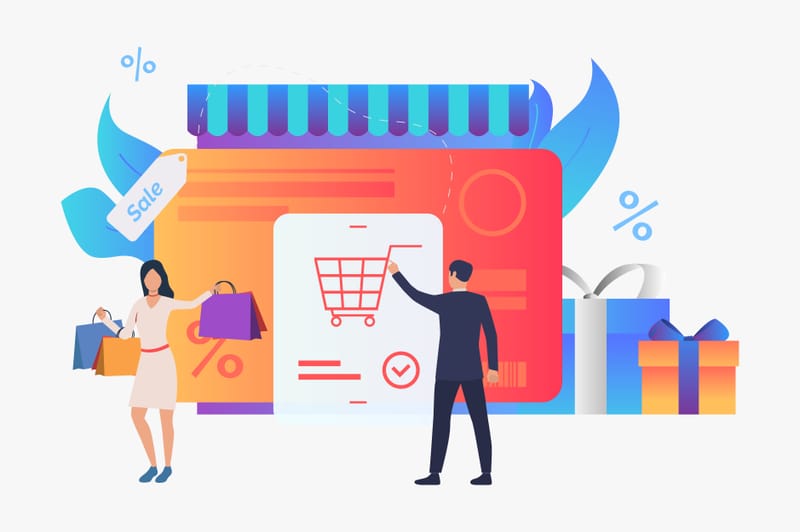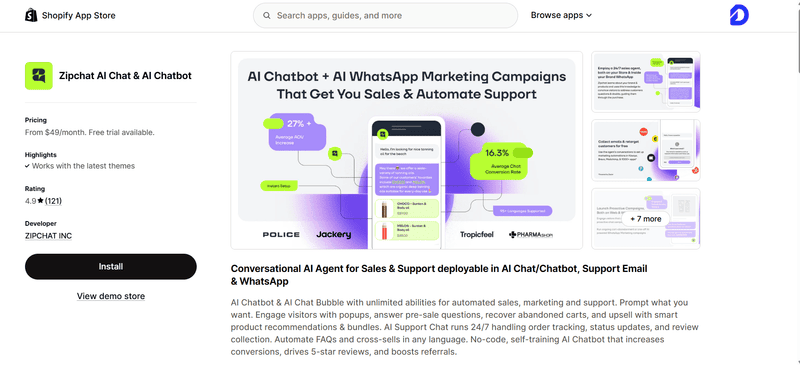
The race to capture and analyze consumer data is a top priority for businesses of all sizes and industries, from tech giants like Apple and Google to small local shops.
Why is consumer data so important? Because it can help brands improve their customer loyalty programs, increase sales, increase CLTV, reduce advertising spend and even build their brand reputation in the digital world.
Consumer data helps you better understand your customers' needs and preferences by collecting information about their behaviors online and offline.
This knowledge can help you create better products and services that solve problems or meet specific needs. You can also use this information to predict future trends to stay one step ahead of the competition.
Contents
- Consumer data helps you improve customer loyalty programs
- Consumer data can help you remarket effectively
- Predict future trends in consumer behavior
- Consumer data can improve your customer experience
- How is consumer data changing?
- What is first-party data?
- What's your solution to collect first-party data?
Consumer data helps you improve customer loyalty programs

Customer loyalty programs are designed to reward repeat business, attract new customers and retain existing ones.
These programs can be as simple as giving away a coupon or a discount, or they can be as complex as offering exclusive discounts on certain products or services.
The key to success with these programs is having detailed, accurate information about your customers and their behaviors.
Consumer data helps brands better understand their customers’ needs by understanding what they buy, where they shop, how much they spend on each purchase, how loyal they are to particular brands, what promotions they respond best to (and which hones they don’t) etc.
Consumer data can help you remarket effectively

Consumer data helps brands remarket effectively by giving them the ability to track interactions with their brand and make more targeted offers. It also increases the relevancy of ads as the ad is shown only to someone who may be interested in your product or service.
With customer data, you can tailor your marketing campaigns based on specific interests or purchase histories, making it easier to send relevant emails while spending less time on each message.
For example, if a customer has purchased a phone from your brand, you can then leverage data to sell them accessories that go along with the phone.
This strategy works well because it's personalized and relevant to that customer's needs — which means they'll be more likely to respond positively than if you simply sent them an email with no context whatsoever.
Predict future trends in consumer behavior

The role of customer data in brand strategy is changing. It’s no longer just about the purchase of a product or service but how customers interact with it.
Customer data is a powerful marketing tool for brands. It's a valuable resource that can help you predict future trends in consumer behavior, and make smarter decisions about your products, pricing and distribution.
The most obvious benefit of customer data is that it allows you to learn about your customers' habits and preferences.
This gives you insight into what motivates them to buy from you, which products they like and don't like when they're likely to visit your e-commerce website, what time of year they shop online, and whether they prefer buying in person or online... the list goes on!
You can use this knowledge to tailor your marketing messages so they're more relevant to your customers' needs and interests. This will help drive higher levels of engagement on any channel where you advertise or promote your business.
Consumer data can improve your customer experience
Using consumer data also helps brands improve their customer experience by offering personalized offers based on what's happening inside their accounts at any given time.
For example, if a customer's order is delayed, the brand can automatically send them a coupon code, so they don't have to wait around while it fills out their order in the back office.
64% of the customers expect customized interaction based on previous engagements.
Source: Notify Visitors
Consumer data is a crucial asset for marketers. It’s a way to connect with consumers in real-time, and it can also be used to target people at the right moment.
How is consumer data changing?
The use of third-party data is becoming more difficult. This is because there are more regulations and restrictions on the use of this type of information.
And going into the future, as privacy laws get stricter third-party data which is the most used type of data now, will become impossible to access as all the third-party data comes from cookie tracking as -
● Google announced the stop of third-party cookies in Chrome by the end of 2024.
● Apple is limiting Facebook Ads functions and tracking from iOS 14 Apple devices onwards.
Another reason for the decline in third-party data is that consumers are becoming more aware of their privacy rights. These rights can be exercised by clicking on a box that says “I agree” when they sign up for an online account.
Leading marketers are 58% more likely than mainstream marketers to strongly agree that first-party data is a strategic asset.
The new regulations and restrictions that have been put in place by the government have made it tougher for businesses to collect consumer data.
In addition, many consumers are now using tools such as Facebook Connect and Google+ which allow them to control who has access to their information.
So how are leading brands adapting to the change?
Leading e-commerce brands are aware of the changes happening with second and third-party customer data and are aggressively shifting to using first-party data.
86%
of respondents from medium and large companies considered first-party data to be the most significant aspect of a business’ media strategy.
Source: Nielsen
What is first-party data?
First-party data, also known as 1P data, is amongst the many forms of customer data available for marketers to create targeted marketing campaigns. First-party data is the data that customers directly give to brands with their consent.
First-party data is gold for your marketing teams as it-
- Hyper-personalize your marketing messages.
- Tracks your customer journey.
- Is available only to you and is knowingly given by customers looking to learn more about your brand.
- It's free!
How to collect first-party data?
Marketplaces like Amazon and retail stores are the major sales channels of e-commerce brands currently, and both restrict access to end customer data.
To collect first-party data, you need a solution that can
- Overcome the strict rules and hurdles of your sales channels.
- Encourage your customer to share their data and offer something of value in return.
What's your solution to collect first-party data?
Leading e-commerce brands are using product registration software like Dyrect to collect first-party data of all their customers (marketplace and retail).
Dyrect has enabled marketing teams of leading brands to access first-party data, with a data acquisition rate as high as 40%. Click here to know how Dyrect helps brands gather customer data. To know how Dyrect can help you collect first-party customer data book a demo with our solution experts here.


